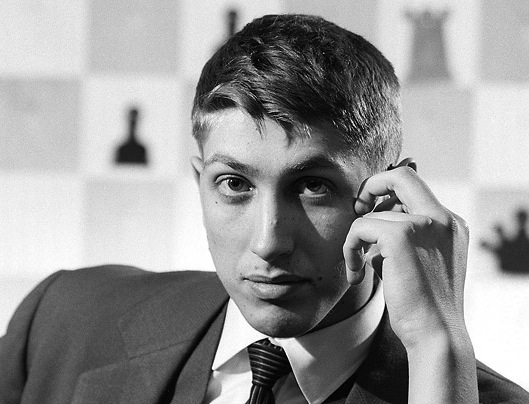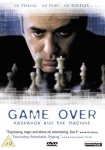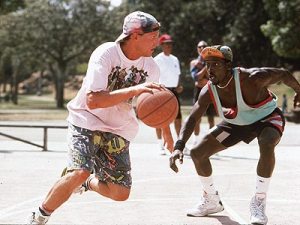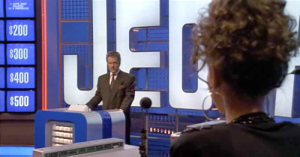
So you have a great idea for a script. Now you need to create some amazing characters. The characters are what will sell your story to agents, producers, actors, investors. Without great characters you won’t even end up as a doorstop under your poor beleaguered script reader’s desk.
Well, you may end up as a doorstop but believe me that is as far as your great idea will get you. Character is everything. What are the three most important things in a script? Character, character and character.
So, to begin with, let’s create a memorably complex, rounded and interesting protagonist.
Wants and Needs
The Want is the easy part: it’s the main desire of the character that thrusts him or her through the story; the external, physical goal.
To escape from prison.
To defeat the monster.
To win the race.
To protect the President.
To find a cure for the disease.
To get the promotion.
To solve the mystery.
To locate the long lost mother.
You get the idea. The most important thing about this want is that your protagonist wants it badly. The more badly they want it, the higher the stakes are. If the stakes aren’t high enough for your protagonist, you run the risk of your audience not caring whether or not they achieve their goal or not.
After a tsunami devastates the island on which they are staying, Maria is on a desperate search to discover if her husband and children are still alive. (The Impossible)
If Brody doesn’t catch the huge man-eating shark, more people on his beach will die. (Jaws)
Clarice Starling must catch Buffalo Bill or more innocent women will be abducted and murdered. (The Silence of the Lambs)
In a character-piece, the stakes will very likely not relate to a heist or an alien abduction or a murder, but they will be just as important for the life of the character.
If Travis Bickle doesn’t find a way to ‘wash the scum off the streets’ – by saving Iris from her life as a pimped young prostitute – he will very likely end up dead. (Taxi Driver)
If Solomon doesn’t find a means of escape from his life in slavery, he will die a slave and never see his family again. (12 Years A Slave)
If Anders doesn’t get his head around starting his life afresh after a stint in rehab, he will kill himself by the morning. (Oslo, August 31st)
The Need is more tricky. It is the internal wound of the character. He or she may not even be aware of what their need is until it clashes with their want late in your story. It could be an unresolved childhood issue; it could be a flaw in their character that is holding them back; it could even be a physical wound that needs to heal.
Brody needs to overcome his fear of the water if he is to catch the shark.
Clarice needs to let Hannibal Lector inside her head to explore her unresolved childhood issues if she is to catch Buffalo Bill.
Travis needs therapy to explore his traumatic experiences in Vietnam, which are undoubtedly behind his inability to sleep and which send him off on his chilling descent into madness.

Don’t worry if your protagonist’s need isn’t immediately apparent; sometimes, as the writer of the piece, you will have to experience the character’s journey alongside him or her and it will take a while before you can think objectively about the themes of your story and what it is really about.
Remember, M Night Shyamalan himself didn’t realise the huge secret of Bruce Willis’s character in The Sixth Sense until he was several drafts in.
The needs of your characters are what will make them rich, complex and well-rounded; they will cease to be one-dimensional ciphers, however determinedly they beat a path to their goal.
If you are having difficulty identifying the need of your main character, consider what it is he or she must learn about themselves over the course of the story if they are to reach their goal. What is it in their nature that is holding them back?
The more contrast there is between the protagonist at the start of the story and the changed person they have become by the end, the more dramatic and transformational a journey he or she will be perceived to have been on.
Delineate this carefully from the start of your planning stages, when you first begin to work your idea into an outline or treatment. Ask yourself if your protagonist is the most extreme version of anything.
Joan Wilder, in Romancing The Stone (1986), is the most naive, unworldly American novelist – so her ensuing adventure in Colombia is set up from the very beginning as being ripe for fish-out-of-water potential as she sets off to find her missing sister.
Try to consider your protagonist as having two parallel goals in your story: one conscious, the other unconscious. These two goals will interact with each other throughout; at some point they will clash and either your character will evolve and adapt and change (and the story will have a hopeful ending) or your character will find themselves unable or unwilling to change (and this fatal flaw will give the story its tragic ending).
What kinds of obstacles are stopping your main character from achieving his or her goal?
These obstacles can take various forms; they can be other characters – including an Antagonist, who must have a clear want and need of his or her own – issues of circumstance and bad luck or even aspects of the protagonist’s own character.
You need to create characters who are in opposition to the main character and who are in his or her way. The chief exponent of this, the Antagonist, does not have to be a sworn enemy or ‘baddie’ of the piece, such as Darth Vader or a James Bond villain, but once these lines of opposition are drawn, it becomes much easier to work out the major plot points and beats of the journey ahead.
If your character’s biggest fear is of failure, for example failing to get the promotion at work, then you could create a character who would be the one to succeed at your main character’s expense. Develop the relationship between these two; perhaps they have been rivals at work since they both joined the company, only the Antagonist has been working there half as long and is on a seemingly effortless fast-track to the top. The audience will be asking themselves, by the time they reach the second act: will our hero manage to beat this guy to the promotion (and get the girl, make his family proud or whatever other strands you bring to the table).
If your character has a flaw or vulnerability that they must overcome, you could hide the flaw in an interesting way at first, perhaps by having the character deny its existence. Audiences connect with characters whom they see are trying to hide in some way.
Let your character externalise their inner conflict and overcome their flaw; having attempted to hide this vulnerable part of themselves, there has to be a subsequent moment when they deal with it. When and where is the crossover point and is it dramatic and interesting?
Consider Ernesto’s asthma in The Motorcycle Diaries (2004). It is there from the opening scene of the film. This frailty to his character arouses our sympathy and makes us care about him; it is the reason his family are concerned about him; why he gets sick later in the story and, most importantly, what lends a real sense of danger to his climactic, symbolic swim across the river to the patients at the leper colony.
In American Beauty (1999), Lester Burnham wants to have sex with his daughter’s fit blonde friend Angela. But he is the most boring, out of shape, suburban nobody.
What are the obstacles to his achieving this goal?
His cold, controlling wife; he is about to be fired; his low self-esteem; his weight and fitness; the fact that he has forgotten how to experience joy.
To win Angela round, he needs to remember what it feels like to be alive and to experience the beauty of everything around him in his life.

Why do we care?
As the audience, we have to root for your main character. How he or she develops and changes over the course of the story will engage us.
Seeing aspects of our own lives reflected in a character’s plight elicits an audience’s empathy and we invest emotionally in proceedings.
We make sense of characters by understanding why they say and do and react in the way that they do, so there has to be consistency in their actions and speech.
So make sure therefore that your main character’s motivations are clearly laid out and easy for the audience to understand.
It is so rewarding for your poor beleaguered script reader when they realise that it is your protagonist guiding them by the hand through the story.
CL
 here is none of the ill discipline symptomatic of later works (Inglourious Basterds and Django Unchained spring to mind) in which one uneasily observes tinkerman Quentin overplaying his hand. Post-Pulp Fiction, the borrowings no longer stand up without the same considered idea or morality behind depictions and techniques. A film about criminal life in L.A immunises itself against this failing in a way that a movie depicting Nazism or the American 1800’s slave trade cannot.
here is none of the ill discipline symptomatic of later works (Inglourious Basterds and Django Unchained spring to mind) in which one uneasily observes tinkerman Quentin overplaying his hand. Post-Pulp Fiction, the borrowings no longer stand up without the same considered idea or morality behind depictions and techniques. A film about criminal life in L.A immunises itself against this failing in a way that a movie depicting Nazism or the American 1800’s slave trade cannot.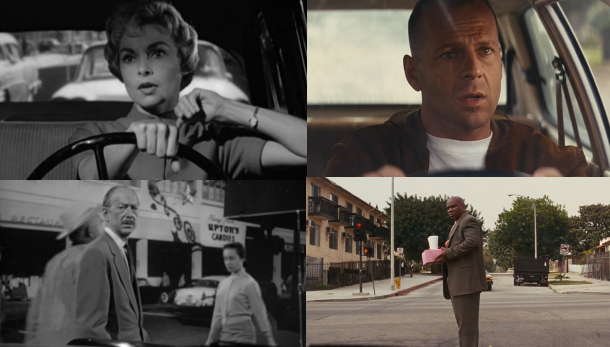
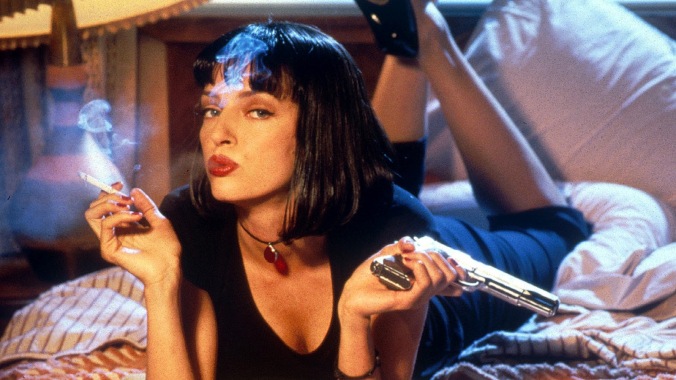
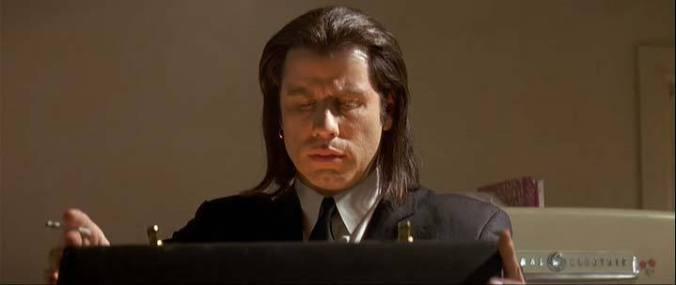
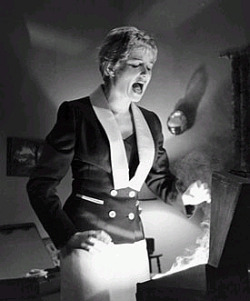
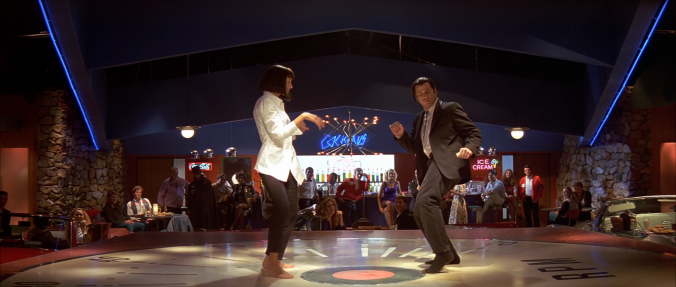


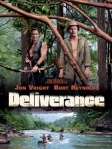

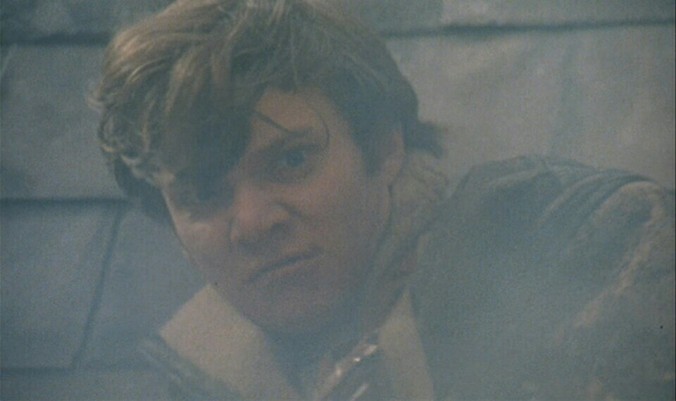
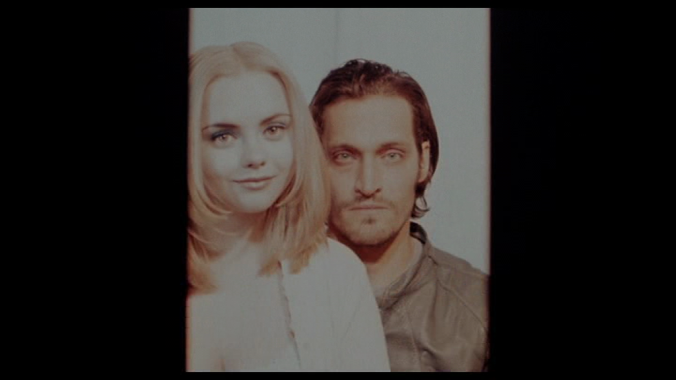
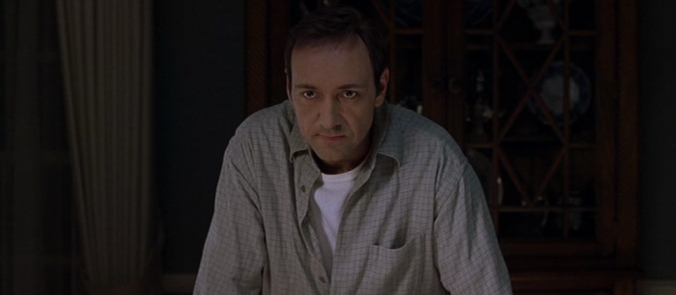






 He estimates it should take him about four weeks, averaging 250-300 dollars per day. In Vegas he meets Sera (Elisabeth Shue), a prostitute, and it is their involvement with one another, and the trials of their subsequent co-dependency, that are the beating heart of the film.
He estimates it should take him about four weeks, averaging 250-300 dollars per day. In Vegas he meets Sera (Elisabeth Shue), a prostitute, and it is their involvement with one another, and the trials of their subsequent co-dependency, that are the beating heart of the film.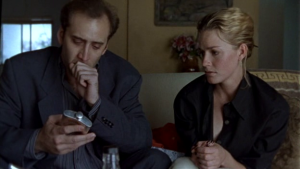 telling Ben she wants him to see a doctor. Ben would have her, and us, believe he is ‘totally at ease’ with the fact that Sera is a prostitute. When he buys her some earrings and helps her to put them on, however, he whispers in her ear without thinking: ‘You’ll be able to feel it sharp and hot under your ear as one of the brothers is putting your head face-down into one of the penthouse pillows’. The film is full of such extraordinary exchanges between the pair. ‘Maybe I should follow you around and ask one of your tricks what it’s like to sleep with you’, says Ben. ‘They wouldn’t know’, replies Sera.
telling Ben she wants him to see a doctor. Ben would have her, and us, believe he is ‘totally at ease’ with the fact that Sera is a prostitute. When he buys her some earrings and helps her to put them on, however, he whispers in her ear without thinking: ‘You’ll be able to feel it sharp and hot under your ear as one of the brothers is putting your head face-down into one of the penthouse pillows’. The film is full of such extraordinary exchanges between the pair. ‘Maybe I should follow you around and ask one of your tricks what it’s like to sleep with you’, says Ben. ‘They wouldn’t know’, replies Sera.













